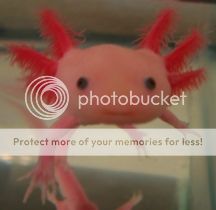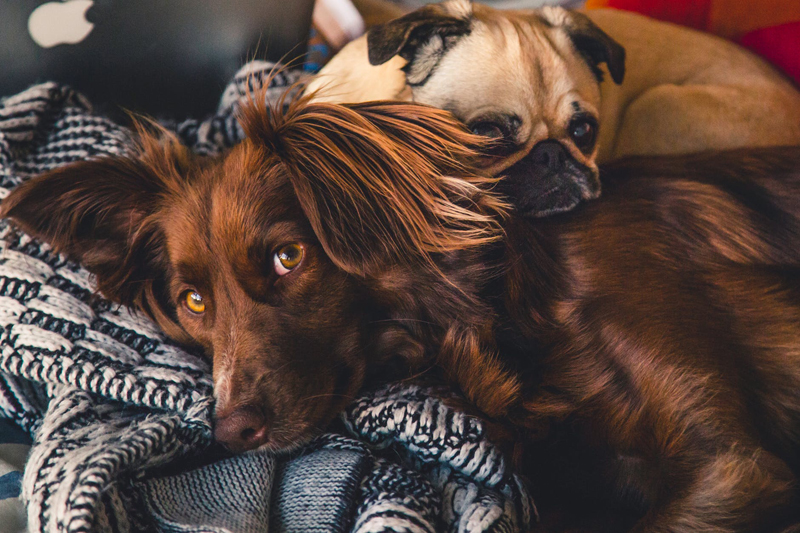Why are Baby Animals Cute?

Several factors play into why people experience adoration at the sight of a baby animal. Remarkably, the reaction derives from the same reasoning behind why people love their babies. Therefore, to understand the link between humans and their perception of animal cuteness, it is first important to understand the nature of being human.
Unlike most mammals that are born with some fundamental defenses like walking, clinging, or climbing, people are born into this life without any such characteristics. Therefore, nature needed to put in safeguards to ensure that adults would tend to the survival of their defenseless offspring. The biological defense is the release of a hormone called oxytocin, sometimes referred to as "the love hormone." The hormone is released from the hypothalamus, located within the brain, and is one of the most euphoric and calming drugs the human body produces. It is responsible for maternal instinct, sexual interest, social interaction, managing stress levels, learning ability, memory processing, and behavior towards food consumption. The body produces oxytocin from exposure to touching, or simply gazing into eyes, irrespective of the species. Typically, higher amounts of the hormone result from prolonged contact, such as hugging and cuddling. Further, studies show that exposure to cold temperatures causes oxytocin levels to rise.
While all mammals have oxytocin in their systems to aid in parent-offspring bonding, it is likely that humans experience a higher drive from the hormone to ensure survival, as babies are completely reliant on adults for protection. In addition to helping form human relationships, it is believed to be the driving factor to the human-animal bond. When people see a baby animal, a majority are compelled to touch, hold, cuddle, and protect it. This effect results from the baser human understanding that babies are defenseless. Therefore, the body naturally raises its level of released oxytocin when exposed to the animal. The chemical reaction to this hormone also explains why people are usually in awe when a newly born animal stands up, even when otherwise educated to understand that it is a normal process for most mammals. While there are other factors of consideration, the release of oxytocin is largely responsible for how people perceive cuteness.
The phraseology that defined animal cuteness came from a 1950's Australian animal behaviorist, Konrad Lorenz. When his observations gained scientific recognition, the science field adopted the term neoteny to explain the pedomorphosis phenomenon, in which some species maintain a youthful appearance and demeanor even into adulthood. The Axolotl salamander holds the truest meaning to the neotenic definition, as it keeps a tadpole-like appearance throughout life. However, many domesticated animals display neotenous traits with floppy ears, big eyes, and a playful demeanor. Thanks to the release of oxytocin, people identify these traits to mean cute and cuddly, which are the stepping-stones to the human understanding of defenseless. However, this can become dangerously misleading, as the neotenous traits of wild animals, such as bears, wolves, wild dogs, or feral cats can lead to an inaccurate survival response from people, as the chemical reaction occurring in their brains is not allowing them to assess a threat. This is particularly true for children, who generally embrace the euphoric feeling and want to cuddle the animal. Education is the key to combat this shortcoming, as it is counterintuitive to the nature of most children to understand that simply because an animal looks cute does not mean it is harmless.
Learn more about America's Wildlife and North American Predators
and North American Predators .
.
Unlike most mammals that are born with some fundamental defenses like walking, clinging, or climbing, people are born into this life without any such characteristics. Therefore, nature needed to put in safeguards to ensure that adults would tend to the survival of their defenseless offspring. The biological defense is the release of a hormone called oxytocin, sometimes referred to as "the love hormone." The hormone is released from the hypothalamus, located within the brain, and is one of the most euphoric and calming drugs the human body produces. It is responsible for maternal instinct, sexual interest, social interaction, managing stress levels, learning ability, memory processing, and behavior towards food consumption. The body produces oxytocin from exposure to touching, or simply gazing into eyes, irrespective of the species. Typically, higher amounts of the hormone result from prolonged contact, such as hugging and cuddling. Further, studies show that exposure to cold temperatures causes oxytocin levels to rise.
While all mammals have oxytocin in their systems to aid in parent-offspring bonding, it is likely that humans experience a higher drive from the hormone to ensure survival, as babies are completely reliant on adults for protection. In addition to helping form human relationships, it is believed to be the driving factor to the human-animal bond. When people see a baby animal, a majority are compelled to touch, hold, cuddle, and protect it. This effect results from the baser human understanding that babies are defenseless. Therefore, the body naturally raises its level of released oxytocin when exposed to the animal. The chemical reaction to this hormone also explains why people are usually in awe when a newly born animal stands up, even when otherwise educated to understand that it is a normal process for most mammals. While there are other factors of consideration, the release of oxytocin is largely responsible for how people perceive cuteness.
The phraseology that defined animal cuteness came from a 1950's Australian animal behaviorist, Konrad Lorenz. When his observations gained scientific recognition, the science field adopted the term neoteny to explain the pedomorphosis phenomenon, in which some species maintain a youthful appearance and demeanor even into adulthood. The Axolotl salamander holds the truest meaning to the neotenic definition, as it keeps a tadpole-like appearance throughout life. However, many domesticated animals display neotenous traits with floppy ears, big eyes, and a playful demeanor. Thanks to the release of oxytocin, people identify these traits to mean cute and cuddly, which are the stepping-stones to the human understanding of defenseless. However, this can become dangerously misleading, as the neotenous traits of wild animals, such as bears, wolves, wild dogs, or feral cats can lead to an inaccurate survival response from people, as the chemical reaction occurring in their brains is not allowing them to assess a threat. This is particularly true for children, who generally embrace the euphoric feeling and want to cuddle the animal. Education is the key to combat this shortcoming, as it is counterintuitive to the nature of most children to understand that simply because an animal looks cute does not mean it is harmless.
Learn more about America's Wildlife
You Should Also Read:
Health Benefits of Companion Animals
Meet the Furry Caterpillar
How Animals Help General Mental Health

Related Articles
Editor's Picks Articles
Top Ten Articles
Previous Features
Site Map
Follow @WildlifeWelfare
Tweet
Content copyright © 2023 by Deb Duxbury. All rights reserved.
This content was written by Deb Duxbury. If you wish to use this content in any manner, you need written permission. Contact Deb Duxbury for details.







